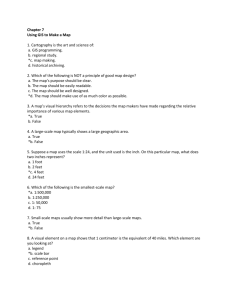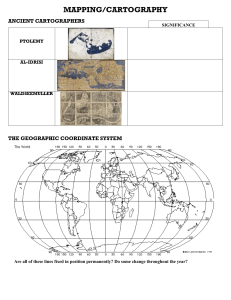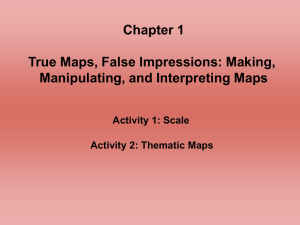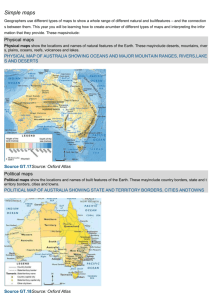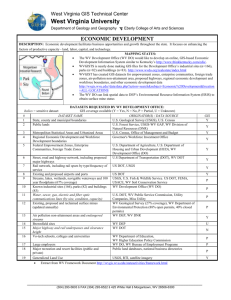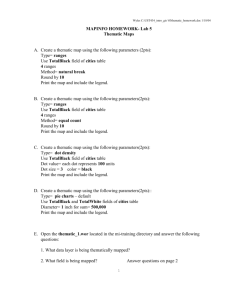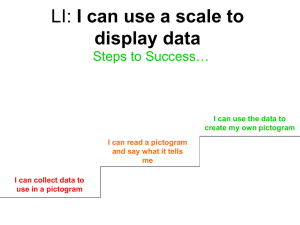Map - WordPress.com
advertisement
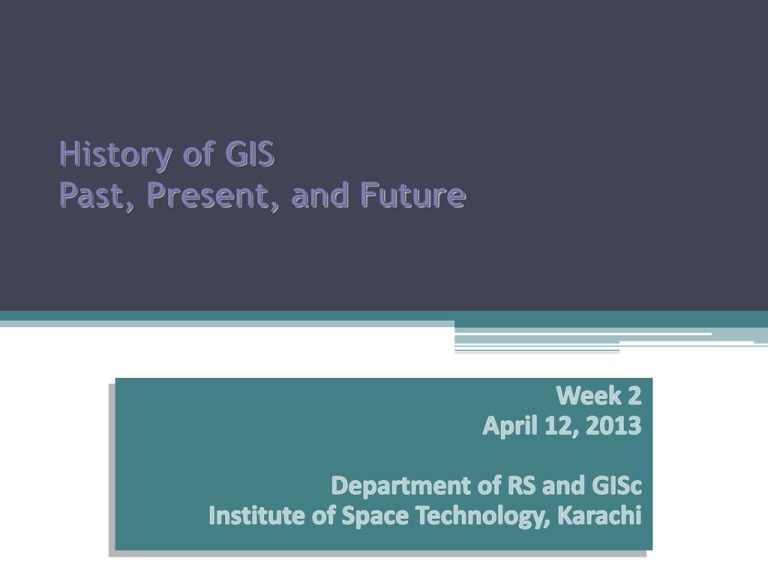
Spatial Information is all about Where is What? Map were conventionally used to answer this question! Few Glimpses › The first route map showing the whole of the Roman world (366–335 B.C.) Modern Age PRE-GIS ERA • Before GIS revolution the link between Where and What was by the traditional, manually drafted map • The tools used were pens, rulers, planimeters, dot grids, and paper sheets • Historical use of map was for navigation to know the location of physical features ▫ First printed Atlas of the world by legendary geographer Claudius Ptolemy (150 A.D.) ▫ Map projections of a spherical earth and use of latitude and longitude to characterize position Claudius Ptolemy (Alexandria, Egypt) (north arrow notation) › Contour maps showing curves of equal value: an isogonic map, lines of equal magnetic declination for the world, (Edmond Halley, England) (1701) › Geological map (distribution of soils, minerals)- Johann Friedrich von Charpentier, Germany (1778) › Maps of the Battle of Yorktown (American Revolution) drawn by the French Cartographer Louis-Alexandre Berthier contained hinged overlays to show troop movements (1781) ▫ Statistical map of production in Europe, possibly the first economic and thematic map (shows geographic distribution of 56 commodities produced in Europe)- August Friedrich Wilhelm Crome , Germany (1782) ▫ First topographical map- Marcellin du CarlaBoniface , France (1782) ▫ First maps of the incidence of disease (yellow fever), using dots and circles to show individual occurrences in waterfront areas of New York by Valentine Seaman (1798) › The first large-scale geological map of England and Wales (William Smith, England) (1801) › First graph of isotherms, showing mean temperature around the world by latitude and longitude (Alexander von Humboldt Germany) (1817) › Map with shadings from black to white (distribution and intensity of illiteracy in France), the first choropleth map, and perhaps the first modern statistical map (Pierre Charles Dupin, France). (1819) A choropleth map is a thematic map in which areas are shaded or patterned in proportion to the measurement of the statistical variable being displayed on the map Choropleth Map • Map which shows regions or areas which have the same characteristics • • • 0, 1, 2 = light shade 3, 4, 5 = Medium shade 6, 7, 8 = Dark shade ▫ First simple dot map of population, 1 dot = 10,000 people— Armand Joseph Fr`ere de Montizon – France (1830) ▫ First published flow maps, showing transportation by means of shaded lines, widths proportional to amount (passengers)— (Henry Drury Harness, Ireland) (1837) ▫ Dr. John Snow mapped cholera deaths in London and used geographical analysis to trace the outbreak to a contaminated well (dot map to display epidemiological data)- 1854 (or 1855) ▫ Pictogram, used to represent data by icons proportional to a number- Michael George Mulhall , England (1884) Pictogram ▫ Street maps of London, showing poverty and wealth by color coding - Charles Booth (1889) BLACK: Lowest class. Vicious, semicriminal. DARK BLUE: Very poor, casual. Chronic want. LIGHT BLUE: Poor. 18 shillings. to 21s. a week for a moderate family PURPLE: Mixed. Some comfortable others poor PINK: Fairly comfortable. Good ordinary earnings. RED: Middle class. Well-to-do. YELLOW: Upper-middle and Upper classes. Wealthy Summary • As far as basic principles are concerned, GIS is not a new technology • Computer-based GIS is in use since late 1960s ▫ Computer hardware developed the capacity to provide cartographic output ▫ Computer systems become more robust in terms of speed and memory ▫ Computers become cheaper and smaller • From 2-D map display to 3-D visualization to 4-D incorporation of time to 5, 6, 7-D incorporation of touch, sound and smell Reference • http://www.gisdevelopment.net/history/index.htm • http://www.innovativegis.com/basis/MapAnalysis/Topi c27/Topic27.htm#Early • http://mama.indstate.edu/users/gejdg/447wk2.pdf • Milestones in the history of thematic cartography, statistical graphics, and data visualization by Michael Friendly August 24,2009: http://www.math.yorku.ca/SCS/Gallery/milestone/mile stone.pdf • Most of the slides are taken from Prof. Maria Antonia Brovelli’s lecture notes.
